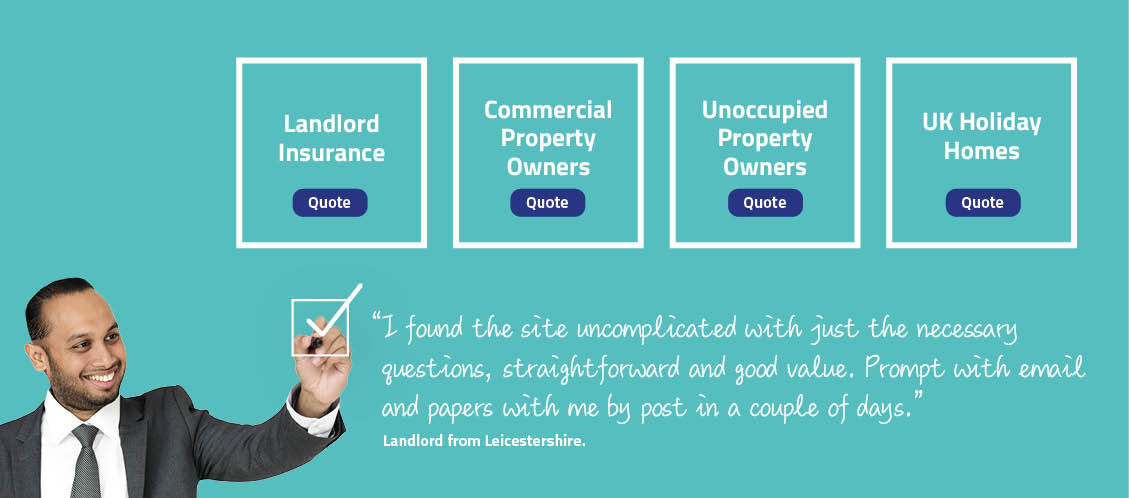If you own buy to let property, landlord insurance is imperative. In fact, if your property is mortgaged, your loan provider may typically require you to have at the very least buildings insurance to protect your financial interest in the property.
So, where can you buy landlord insurance? And how do decide which landlord insurance – or buy to let insurance, as it is also known – is the most appropriate for you?
Where can I buy landlord insurance?
The question typically boils down to three main options:
Potluck
- take a guess and buy the first policy you see from a financial institution or comparison website – you’ll probably not discover whether you made the most suitable choice until you need it;
Do the legwork
- you could take a considerable amount of time and effort to familiarise yourself with all aspects of the landlord cover marketplace and then evaluate lots of different policies using your newly found skills; or
Consult the experts
- probably the most efficient and time-saving way lies in consulting an independent insurance broker – such as ourselves here at Cover4LetProperty – and letting the experts make a comprehensive comparison on your behalf to arrive at a suitable policy at a competitive price.
Whatever way you decide to source your cover, what do you need to consider when choosing your landlord insurance.
What are the key things to look for?
Essentially, you will need to look at what a policy is providing and how relevant that is to your individual landlord business. And that, in turn, means carefully comparing several potentially suitable policies.
It is also important to read and understand the terms and conditions associated with the policy. These may vary depending on whom your policy provider is.
By way of example, here are just a few of the key areas in which various – apparently similar – policies might vary one from another:
- subsidence cover – unfortunately, it is no longer safe to assume that this will be included automatically, as standard, in every buildings policy, so, when you are going through a let property insurance comparison, you may find that it is included on some policies but not others;
- discount opportunities – it’s probably fair to say that many policies offer discounts in return for particular decisions and choices on the part of the policyholder, however, some may be far more forthcoming than others in that respect;
- trace and access cover included as standard – this basically provides protection against situations where a tradesperson is forced to cause damage to your property while searching for the origin of a problem, and not all policies will pick up such costs;
- all tenant cover – some policies might exclude certain categories of tenant including groups such as students, DSS recipients and asylum seekers. So, if you plan to let to these categories or simply wish to have complete freedom of choice, you may want to look for all tenant cover;
- flexible voluntary excess – some policies might offer you a discount on the premium if you opt for higher levels of voluntary excess on the policy, but bear in mind that not all providers will do so;
- options for loss of rental income – there may be provision for compensation of any loss of income arising from circumstances where you are forced to keep your property unoccupied following a problem caused by an insured event (e.g. flood or fire); and
- malicious damage by tenants – once again, this is not necessarily commonplace, with some buy to let insurance policies offering such cover as standard whereas others do not.
How can I save money on the cost of my policy?
Whether or not you seek the expert advice of an independent insurance broker, perhaps the most obvious step to take is to make sure that you have looked around at a number of options and have found one that you believe to be cost-effective. That is the comparison where you are likely to be in search of value for money for a policy that matches your particular needs and circumstances.
With value for money in mind, you might also want to take up the offer of any discounts extended by certain providers. We have already mentioned the possibility of reduced premiums, for example, if you agree to a higher voluntary excess. But you might also want to compare the value of discounts given in return for a no-claims history or by taking additional security precautions to help keep your property safe.
I have read a lot about flood cover issues – what is the reality?
There is little doubt that the ever-increasing numbers of flood claims are proving to be a serious financial challenge for the UK insurance industry. The total cost of settling claims arising from flood damage during the winter of 2020, for example, is estimated to have been more than £360 million.
As a result of this, increasing numbers of providers may not offer flood cover as part of their basic policy or may not do so in circumstances where your property is located in a known high flood-risk area. So, you might first want to check the level of risk associated with your property – through a simple postcode search of the official Government website.
In other cases, such cover may be available but might be subject to a separate policy, special terms or increased premiums (perhaps all three). This is a subject on which specialist advice might be sought.
Next steps
We have considered just some of the differences to look out for when searching for suitable landlord insurance. Here at Cover4LetProperty, we remain only too happy to expand on any of the above in more detail and discuss further questions and queries with you. You can also get a quote online or over the telephone.
Your property constitutes a significant investment of your capital, and it only makes sense to do what you can to protect that. Taking note of some of the above points and others like them might help you to do so.








